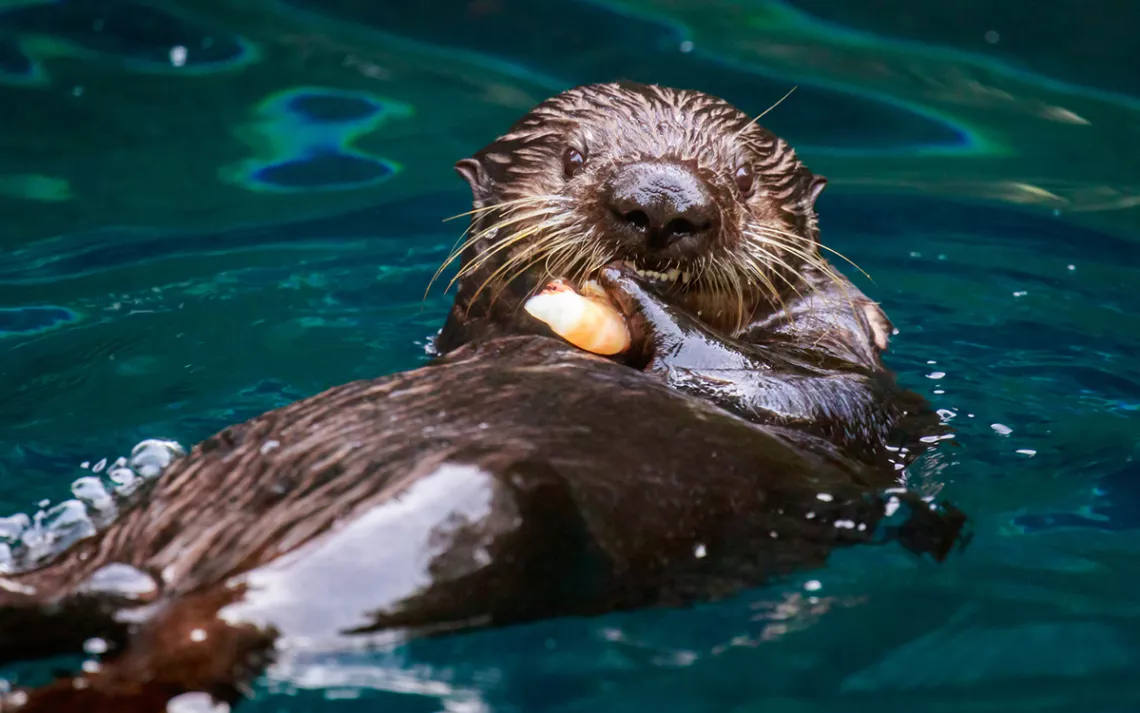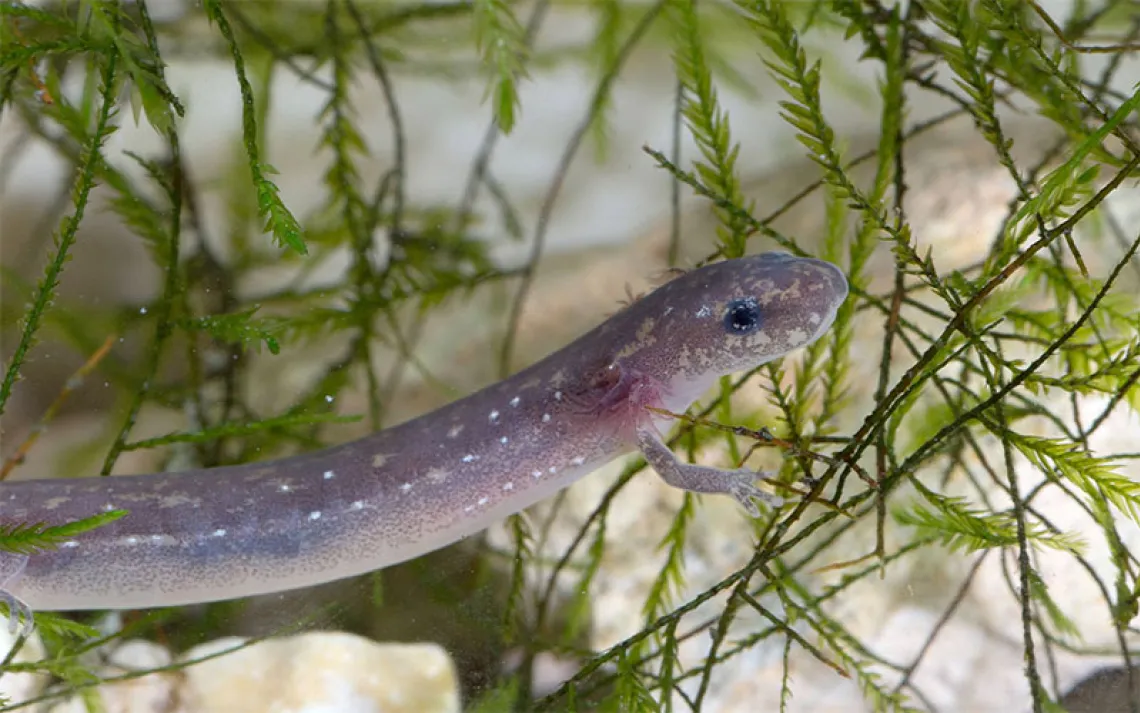Oregon Needs Otters!
Scientists, divers, and Indigenous people are trying to bring them back—but it will take everyone working together

Photo by Png-Studio/iStock
Five years ago, Peter Hatch’s father, David, passed away unexpectedly after an allergic reaction to a wasp sting. In his grief, Hatch felt another sadness too: He feared that his dad’s dream of reestablishing sea otter in Oregon had also died. Hatch, a member of the Confederated Tribes of Siletz Indians, says that despite a decade of efforts, otter reintroduction efforts had reached a dead end.
Until recently. Today, Hatch sits on the board of directors for the Elakha Alliance, a nonprofit dedicated to restoring sea otter to Oregon. President Bob Bailey says the organization is currently finalizing a feasibility study with the hopes of returning sea otter to Oregon coastal waters in the next three to five years. “Reintroductions are and have been a successful conservation tool. It's not that this is something wild or radical,” he says. He also knows it won’t be easy: “Returning sea otter will have many direct and indirect effects, and that is the probably the understatement of the year.”
Sea otter are keystone predators. They protect near-offshore kelp forests through their consumption of kelp’s enemies, including purple urchin. Without otter, urchin populations grow exponentially, decimating kelp forests. These eventually form “urchin barrens,” whose members enter a dormant state until the kelp regrow. Then they devour it again.
Sea otter, or xvlh-t’vsh (XUTL-tush), are also irreplaceable to cultures like those of the Confederated Tribes of Siletz Indians, which comprises 27 Indigenous peoples. Hatch, who is also a historical researcher for the tribes, says the value of sea otter goes beyond their ecological role the prized softness, warmth, and waterproofness of their pelts.
“The items that make up traditional conceptions of wealth—especially things like dance regalia and jewelry—all come from other beings, plants and animals that we share western Oregon with,” he says. The interconnectedness of species is a theme in tribal lore, like the tale of a woman from the Coos tribe who married into an otter family and went to live at sea with them. The absence of sea otter, then, represented a broken link, one Hatch and his father hoped to repair.
California sea otter disappeared in the northwest after aggressive commercial hunting in the 1700s and 1800s. A 1970s reintroduction was successful in California and Washington, yet, despite the fact that Oregon otter survived long enough to produce pups, they again disappeared from the state’s coastline. Tom Calvanese, a fisheries scientist at Oregon State University’s Marine Science Initiative, says that a lack of data from that era makes the exact cause impossible to pinpoint. Marine ecologist Dominique Kone, the primary investigator in a 2019 feasibility study for sea otter reintroduction in Oregon, thinks that “one of the better explanations” for the failure was adult sea otters’ tendency to return to home ranges if they are relocated.
“The thought is now that in the future, we might want to consider bringing over more juveniles who do not have an established home range so that when they become adults, they will choose to stay in Oregon because it's a habitat they are already used to,” Kone says. His research predicted that the Oregon coast could sustain a population of about 4,500 sea otter.
Reintroduction proposals have captured the attention of Indigenous communities, commercial fishing industry members, and scientists like Calvanese. He’s currently leading a study that pairs scientists with sport divers to remove purple urchin at five sites along the inhospitable Oregon coast, with hopes of reintroducing kelp forests. Calvanese hopes that periodic urchin clearing, even if it must be done by divers by hand, will help the kelp to reestablish itself.
Sea otter reintroduction on its own isn’t a quick fix for urchin barrens. A recent study from researchers at UC Santa Cruz showed that otter just move along when they encounter barrens of “zombie” urchin whose shrunken uni (edible innards) have little nutritional value.

Sign up to receive Sierra News & Views
Get articles like this one sent directly to your inbox weekly.
With this action you affirm you want to receive Sierra Club communications and may vote on policy designated by the Sierra Club Board.
“Otters aren’t stupid, and they’re not going to keep diving and picking urchins that have no nutritional value,” said Calvanese, who was not involved with the Santa Cruz study.
“The notion that an otter’s going to go clean up all these zombie urchins is just not realistic.”
Oregon’s commercial crabbers fear that hungry otters would turn to Dungeness crab. Tim Novotny, spokesperson for the Oregon Dungeness Crab Commission, says crabbers would like more data about otter population levels that could impact juvenile Dungeness crabs and, by extension, “an industry that brings in hundreds of millions of dollars to the state economy.” Both Novotny and otter reintroduction advocacy nonprofits like the Elakha Alliance agree that the Marine Mammal Protection Act needs to be amended prior to sea otter reintroduction to allow for population control, if needed; California sea otter are currently considered threatened species under the Endangered Species Act.
“If you don't put it on the books ahead of time, nobody's going to want to go in and start trying to thin the herd of cute sea otters,” says Novotny. “It's not going to be a winnable thing after the fact.”
Scientists like Kone point out that Oregon is a long way from sustaining 4,500 otter. “The reality is that if reintroduction is going to happen, it's going to take that population some time—probably a lot of time—in order to hit that maximum abundance that I predicted in my study,” he says.
Meanwhile, as another otter reintroduction nears, community members like Peter Hatch are cautiously hopeful: “I think we've gotten to a place where I think we will see it in my lifetime.”
 The Magazine of The Sierra Club
The Magazine of The Sierra Club



